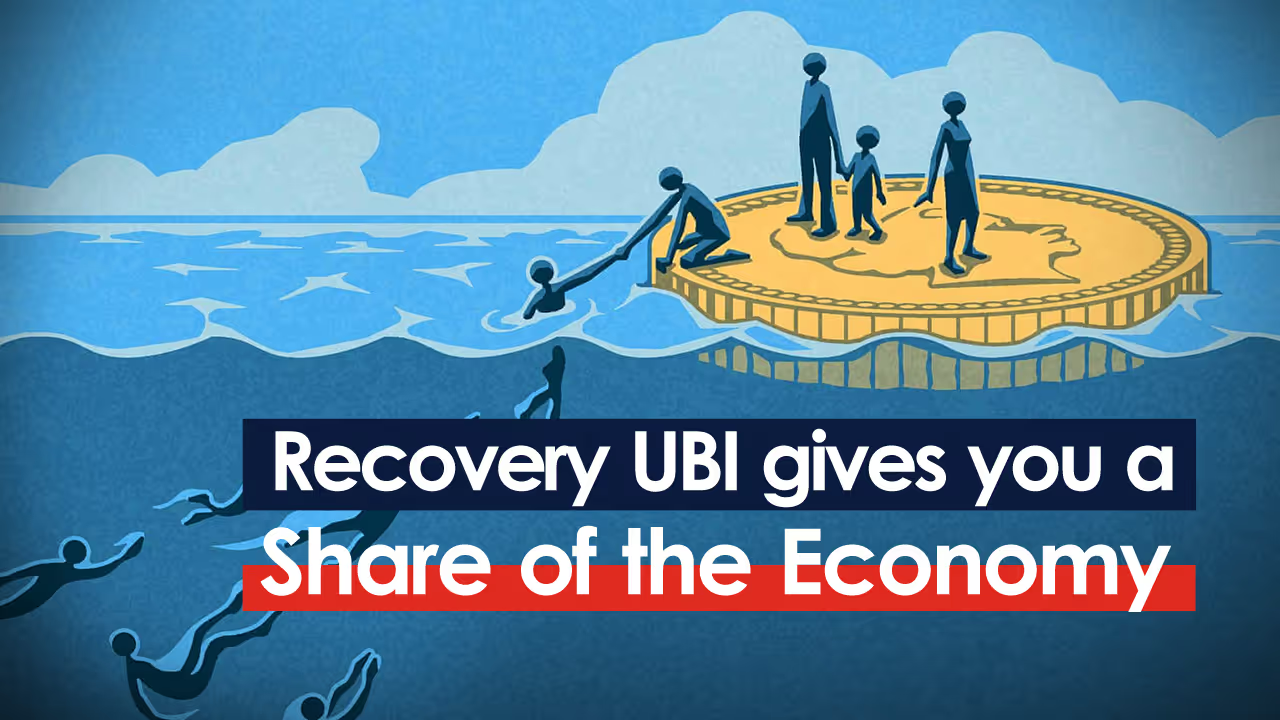
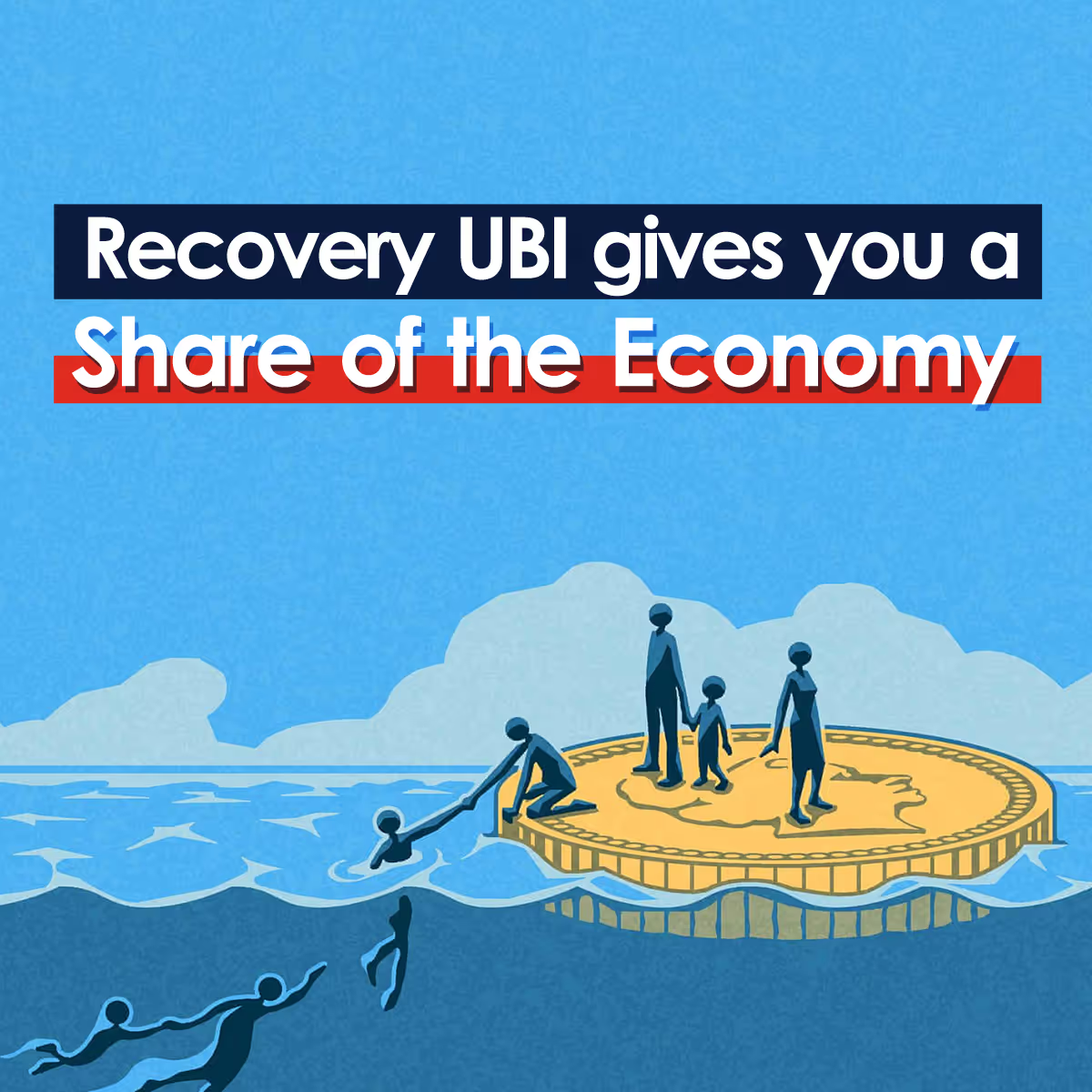
Last Updated: January 19, 2021
Our economy is leaving most Canadians worse off. Jobs aren't working for most people, because wages are not growing faster than costs of living. A key reason for this is that technology is cheaper than workers. We are in the fourth industrial revolution, and the job and wage displacement is accelerating.
We can fix this—and reclaim our prosperity—with Recovery UBI.

A universal dividend (UBI) gives each of us a share of our economy—giving a raise to all Canadians and letting us share in the value that technology is creating.
Furthermore, a guaranteed minimum income (GMI) buys us the time we need—by keeping us out of poverty—as we transition into the new economy.
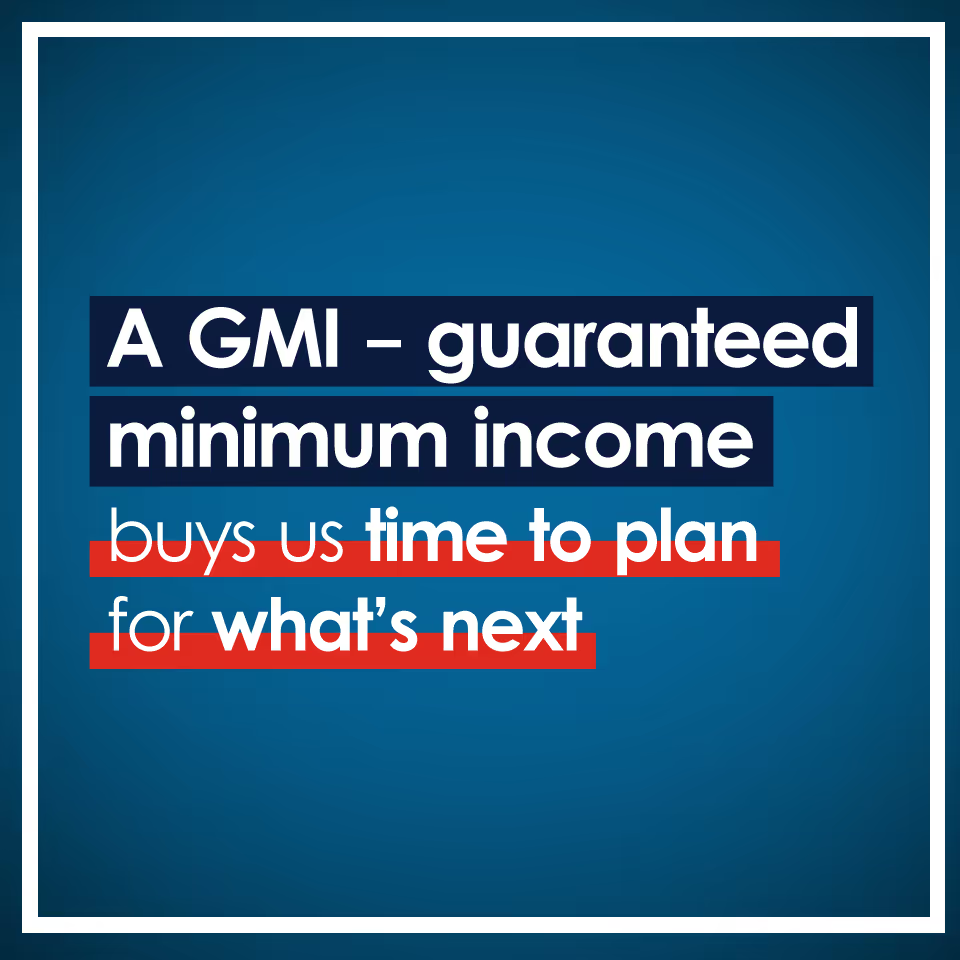
Canadians cannot wait. We need Recovery UBI NOW. If we don't do this now, Canada's recovery will leave most of us worse off—just like previous recoveries. Recovery UBI is how we ensure a fairer and faster recovery for all.
In this article:
A post-pandemic recovery without a UBI will leave most people worse off, just like previous recoveries have. We can get it right this time: a $500 monthly non-taxable payment to all adults, which increases to guarantee each individual an income of $2,000/month ($3,000 per couple, and $1,500 per additional adult in the family) will speed up our economic recovery and leave Canadians stronger.
Click here to save these graphs to your device.
Recovery UBI delivers two complementary components that each solve different problems:
1. The universal dividend (UBI) recognizes that jobs aren't working for most people.
Incomes are not keeping pace with rising costs of living because technology is cheaper than workers. UBI gives each of us a share of our economy, providing a raise for all Canadians and a basis for shared prosperity as we go through a period of rapid and disruptive technological automation of jobs.
2. The guaranteed minimum income (GMI) buys us time by keeping us out of poverty.
It restores pathways into the middle class. It defends against declining job quality by ensuring all Canadians, including seniors and those living with disabilities, will make more than $24,000/year. It could replace low-income support programs with a more efficient, lower cost system that treats people with dignity.
Both of these programs are often individually referred to as basic income but are generally considered to be implemented exclusive of one another. However, they are both needed. One program without the other is an incomplete solution. Neither alone are sufficient to address the structural changes that have made our economic system stop working for most people and the forces that will continue to worsen these trends. Combined, they will ensure that all Canadian adults have an income of at least $24,000/per year ($36,000 per couple), including seniors and those living with disabilities.
Programs like a guaranteed minimum income would move people just above poverty—a great social achievement on its own—but this solution falls short of addressing the challenges in our 21st century economy, where wage growth is disconnected from productivity and economic growth.
A universal dividend gives all Canadians a share of our economy.
UBI is how we organize ourselves as a society to benefit from the value that technology is creating. It re-connects economic growth and increased technological productivity with improving quality of life. UBI secures and expands the middle class, a hallmark of a successful democracy.
Canadians have long recognized that successful long-term policies are ones that we all pay into and have an equal right in, just like universal healthcare. It is therefore important that all Canadians are entitled to receive a portion of Recovery UBI, even if they do not strictly require it, just as everyone can receive free flu vaccinations even if they can afford it. However, we also recognize that the needs of some Canadians are greater and more pressing than others, which is why the sickest person gets seen first under our healthcare system and the lowest-income Canadians would receive more under Recovery UBI.
The two components—an equal universal dividend and a needs-based payment—can together achieve the economic reset we need, funded through realistic tax reforms. (See our accompanying article: How to Pay for a Universal Basic Income.)
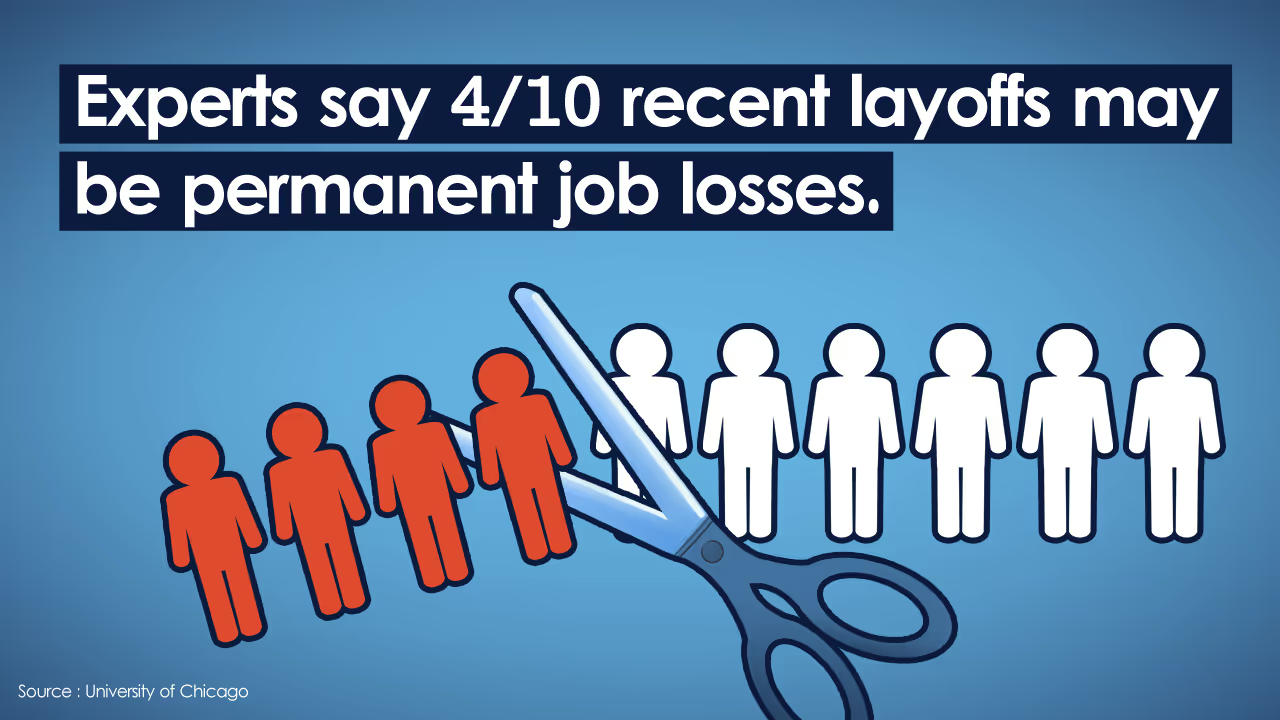
When billionaire investor Ray Dalio says that capitalism is not working for most people, when former Conservative Prime Minister Brian Mulroney says a guaranteed basic income needs to be looked at with “great priority”, and even Canada’s former Bank of Canada Governor Stephen Poloz called for an ongoing CERB-like mechanism - the time for band-aid solutions and incremental measures is over.
The COVID-19 pandemic has laid bare the financial precarity that has long plagued Canadians. Too many of us discovered we were surviving close to the edge of insolvency. The warning signs were clear but went unheeded. For decades, average Canadians have seen it become harder and harder to find good paying work and support rising costs of living.
This trend is due in large part to the fact that advances in technology have made the work that many Canadians do less valuable, as machines take on an ever-greater share of value creation in our society at a lower cost than people. The result has been a polarization of job quality and wage growth, with most Canadians being undercompensated for decades, spurring increased wealth inequality and lowered quality of life for people. Things are getting worse for most, not better. A healthy economy should be moving people up, not down.

We need a plan that immediately addresses the consequences of decades of a shrinking middle class and growth in low-income, precarious work - a plan that makes the economy work for everyone.
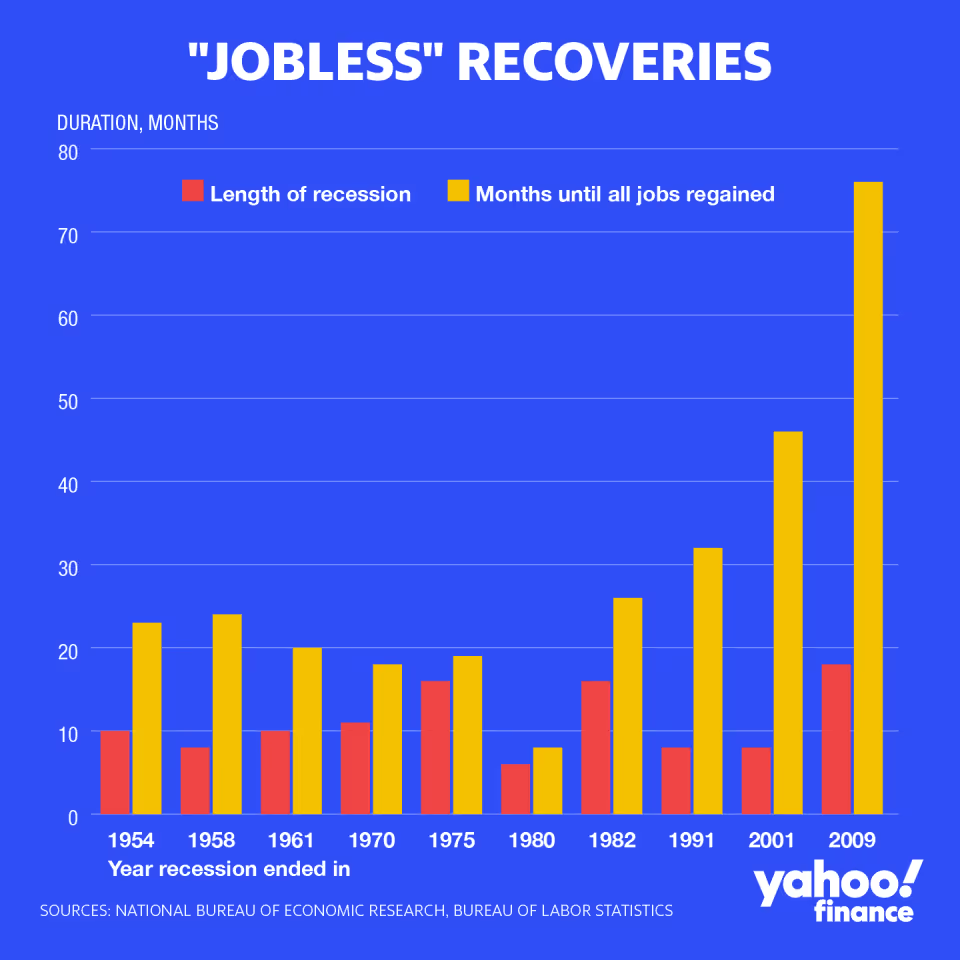

The need is dire. Wage growth for most people is no longer coupled to economic growth or productivity growth. People are working harder and longer and getting less results than their parents or grandparents did.
This phenomenon is called the Great Decoupling of wage growth from productivity growth. It is widely seen as the consequence of advances in computing and robotics, beginning with the inception of mainframe computers in the 1960s. All developed countries have experienced this trend.
Between 1976 and 2014, labour productivity in Canada grew at a rate of 1.12% per year, for a total growth of 52.5%. In contrast, the median hourly earnings of workers grew by only 0.09% per year over the same period, for a total growth of 3.3%.


Source: Economic Policy Institute
While no country an escape the impact of technology on wage stagnation, one of the reasons Canada’s wage growth has done a little bit better than the US is unions:
Unions now represent around 11% of American workers (though less than 7% in the private sector) as opposed to 28% in the 1960s. In Canada, the unionization rate is still above 30%, close to the U.S. mid-1950s peak of 35%.
Technology is now cheaper than workers. It is claiming an ever-greater share of the value being created for those who own the capital at the expense of the middle class and workers’ wage growth.
Economists studying the issue have shown that we are not creating new types of work fast enough to replace the jobs technology is displacing, and this is a major factor contributing to the wealth and income inequality in Canada and throughout the developed world.
Between 1976 and 2014, the labour share of aggregate income (money going to people who work) declined from 59.9% to 53.3%, with the rise of technology and its causal effects of globalization, gig economy, and winner takes all economics, as the most often-cited reasons.

This is money that would have resulted in higher wages and more demand for workers, but is now going mainly to shareholders and executives. The same is happening throughout the developed world. David Autor and Anna Salomons (2018) used data from 28 industries across 18 developed countries to show that automation has had a significant negative impact on labour share, particularly since the early 2000s.
A study of the same effect in the US by the Federal Reserve Board of San Francisco found that without modern automation, the share of income going to working people would have been much higher, matching pre-2000’s levels.

Their study found that: "Having the option to automate jobs strengthens firms’ bargaining power against workers. This keeps wage increases stagnant despite productivity gains. We find that automation contributed substantially to the decline in the labour share since the early 2000s."
"Employed workers are willing to stay in their current positions even when wages fall short of their marginal products, because they would like to avoid the costly search process necessary to find a new job...
Automation gives employers another option in wage negotiations and thus weakens workers’ bargaining power."
A UBI in the form of a dividend is a viable solution to address workers' decreasing share of income and bargaining power as a result of automation.
As a result of these trends, most Canadians have been undercompensated for decades, spurring increased wealth and income inequality.
Since the 1980s, a majority of the population's incomes stagnated or fell, while the top 1% and 0.1% of earners had their incomes grow at a staggering rate. (PressProgress)
Whereas economic and productivity growth used to drive wage growth for everyone, the median wage earners haven’t had a raise in 40 years when factoring in rising costs of living. In fact, between 1982 to 2014, the share of income going to the bottom 50% of Canadians has actually declined by 28%, while the share of income going to the top 1% has increased by 53%.
Unlike previous waves of automation, recent advances in artificial intelligence are putting both blue and white collar jobs at risk of displacement. We know that people displaced by technology suffer earnings losses as high as 25% per year, 6 years after displacement. High seniority Canadian workers who are displaced suffer earnings losses as high as 35%.
Recovery UBI includes a $500/month dividend to all Canadian adults, a dividend that shares a part of the profits from automation with our citizens and recognizes them as shareholders in our economy. It is compensation for decades of lost wage growth, and a foundation on which Canadians can continue to prosper in an economy that values their labour less and less.
As we continue to innovate and become evermore productive, the dividend might grow to a point where it alone will constitute a viable basic income. However, under the current climate, this is likely too expensive.
That’s where a guaranteed minimum income comes in, the other part of Recovery UBI.
A guaranteed minimum income (GMI), also called a basic income guarantee (BIG), is an income supplement that gradually phases out with employment income, so that Canadians always make more when working—ending working poverty.
An effective income guarantee should be set at a level that would virtually end poverty. Recovery UBI builds a guaranteed minimum income on top of the $500/month dividend, government cash supports, and other non-employment income, so that every Canadian makes at least $24,000/year ($36,000 per couple).
Built on top of the $500/month universal dividend, the guaranteed minimum income provides substantial raises for people working in low income jobs.

This guaranteed income gives Canadians a bonus when they go back to work by gradually phasing out by 50 cents per $1 of work income. This is identical to what was tested in the Ontario Basic Income Pilot, as well as the “Back to Work Bonus” proposal by the Conservative Party and the Bloc Québécois to modify the Canada Emergency Response Benefit (CERB), in order to preserve work incentives for Canadians as our economy emerged from lockdown.
We are in the middle of the fourth industrial revolution, where the rapid adoption of artificial intelligence and automation is affecting Canadians at all earnings levels.
Nearly half of the tasks Canadians do at work today are at high risk of of automation over the next 10-20 years. The most at-risk jobs also happen to be our most common jobs: truck drivers, retail salespersons, administrative and clerical workers, and food workers.
In an industrial revolution, we simultaneously see both the displacement of the value of human work for most of us and an increase in the value of our most skilled. This same phenomenon is occurring throughout the developed world.

Technology has also resulted in the erosion of the middle class over the last several decades. Since the 1970s, we have seen a drop in the share of middle-income jobs, and in their place, an increasing share of higher-pay jobs, and an even larger share of low-pay jobs.

For more and more Canadians, the only jobs available are low-pay, low-quality work. These Canadians are facing a crisis of income, an underlying cause of many other crises we are familiar with: rising debt levels, unaffordable housing, working poverty, and falling income security for part-time workers.
A guaranteed minimum income rebuilds the pathway into the middle-class, lifting them out of a cycle of poverty that had once seemed impossible to climb out of. It provides a floor for displaced workers to stand on while they train and acquire skills for the jobs of the future, rather than jumping to the first available, low-income job.



A guaranteed minimum income buys people the time they need to find the jobs that fit them best. It gives them leverage to negotiate better pay and working conditions, a way to offset the decades of declining job quality and earnings seen in Canada and throughout the industrialized world.
We saw this with the Ontario Basic Income Pilot, where two-thirds of the recipients were already working. (More in Lessons from the Ontario Basic Income Pilot section below.)
The security of a long-term income gives people the ability to negotiate higher salaries, go back to school to improve their skills, or consider alternate careers—things that may have been out of reach before a basic income.
By unlocking people’s risk tolerance, basic income would unleash a whole new class of entrepreneurs, creating jobs, growing our economy, and fuelling Canada’s leadership in innovation.

People receiving a basic income have been found to be up to 4X more interested in entrepreneurship. The guaranteed income of the Canada Emergency Response Benefit (CERB) has led Canadians to start new businesses or find new forms of work to contribute back to the community.
It gives students the freedom to focus on education, while acknowledging the work of caregivers and volunteers, who do some of the most challenging but important work in our society. It fills a gap for the millions of Canadians gig workers who have no employment benefits, and thus cannot get EI when work opportunities dry up.
When people have the economic security of guaranteed income, they are better able to take risks in life that are beneficial for their careers, for their families, and for their communities.
Programs that provide a guaranteed minimum income, like the Ontario Basic Income Pilot, would ensure all Canadians are moved out of poverty—a great social achievement. This new income floor would free people from the hundreds of conditional income supports that are currently in place that require complex applications and satisfying arbitrary conditions. It would free those living with disability or in retirement from the fear of losing or having their benefits rolled back.
This can be particularly liberating to those living in poverty. An unconditional program removes the stigma of receiving this money and the disincentive to seek more income. Many choose to go back to school, start a business, or volunteer in their communities.

The Ontario Basic Income pilot helped Luis and Leanna build their business in Lindsay, Ontario.
(Credit: Humans of Basic Income, by Jessie Golem.)
A 2020 survey of Ontario pilot recipients showed that more than one-third of those continuously employed saw their hourly pay increase following the start of the basic income program. More than a quarter of respondents decided to start an educational or training program.
The Ontario pilot showed us that basic income helps Canadians build better incomes, live healthier, give Canadians the freedom to pursue meaningful paths in life, and contribute more fully as members of their communities.

There cannot be a robust and inclusive economic recovery while the bottom 50% continue to experience wage stagnation amidst higher costs of living. A guaranteed minimum income is therefore a necessity to ensure a fairer and faster economic recovery.
According to the Parliamentary Budget Office, such a program could be rolled out nationally for as little as $96 billion annually. This solution, however, is still insufficient in a 21st century economy where increased economic prosperity is no longer translating to increased personal prosperity for most Canadians.
Until the political will is there to pay for a UBI big enough to solve poverty, the best outcome would be combining two programs together, since each solves different problems at different cost levels. We can both solve poverty with a guaranteed minimum income and expand the middle class - by making the economy pay everyone a dividend.
UBI Works’ Recovery UBI proposal combines these approaches to form a basis of a fairer and faster post-pandemic economic recovery that would leave Canadians far better off.
There is precedent for two programs working together. In Canada, our seniors have the Guaranteed Income Supplement (GIS), a needs-based, basic income guarantee providing up to $10,996 annually to singles and even more to couples. The other part of the program is Old Age Security, a rights-based program providing monthly payments, totalling up to $7,362 annually, to seniors for their years of working in Canada. Seniors do not rely on just one of these programs - instead, they enjoy a hybrid model. This approach has been proven to work for seniors and could work for all Canadians if Recovery UBI were implemented.
The best thing for Canada right now is to start with both programs. A $500 dividend and a $2,000 guaranteed minimum income will help millions of Canadians through a long and jobless recovery, which, with sufficient political pressure, could be enacted today.
However, if the dividend were high enough ($1,500-$2,000/month), it could achieve the same outcomes as a guaranteed minimum income. In addition, it would further streamline government services and increase the work incentive, since the dividend is kept in full, regardless of income. Given the gross cost ($720B/year), such a change would be extremely challenging in the context of a post-pandemic recovery.
Recovery UBI does however allow for this possibility, laying the groundwork for the gradual expansion of the dividend to the point where it subsumes the guaranteed minimum income entirely. In pursuing this goal, we can build an economy where every Canadian has the right to benefit from our current abundance and reject the notion that scarcity is required for a productive society.